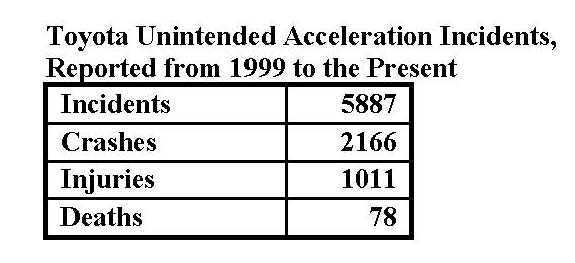After the Wall Street Journal plastered the front page a few weeks ago claiming NHTSA had “black box” (aka Event Data Recorder or EDR) data to support that driver error, not electronics, was the cause of the unintended acceleration issues in Toyotas, the headline is back yet again following a NHTSA Congressional briefing yesterday.
The WSJ in a subsequent story identified George Person, recently retired head of the recall division at NHTSA, as the source. (see No Black Box Exoneration for Toyota and Lawsuits Fill in Outline of Toyota Sudden Acceleration Cover-Up) Continue reading
